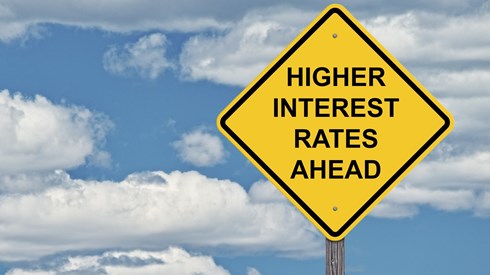Inflationary Trends Having an Impact on Property Insurance Costs

June 29, 2022

With general inflation at a 40-year high, inflation on goods and services related to property insurance is up 10 to 20 percent over the past year, according to a report from Aon.
The June 2022 "Inflationary Trends" report from Aon examining the impact on property insurance notes that the increase in the cost of goods and services related to property insurance has outpaced the Consumer Price Index.
While wages for construction labor have lagged broader wage growth thus far, there are signs that the construction labor market is tightening, Aon reports. The report notes that labor costs can make up 40 percent to 50 percent of building costs, and labor is likely to cost more as the market tightens further.
The Aon report says that material costs and labor shortages have increased costs for all types of building. After a period of leveling, all building types now have seen costs increase over the past 3 months, Aon says.
Property loss trends lag prices, Aon says, so the entire effect of inflation on losses might not be seen until later.
Aon says its property cost index, which combines prices for goods and labor, shows greater than 12 percent year-over-year inflation, though the pace of inflation has declined recently. Inflation for nonresidential construction is slightly higher than that for residential construction, according to the report.
The Aon report notes that the COVID-19 pandemic caused high rates of inflation in 2021 that have continued into this year. The pandemic shifted demand from services towards goods, the report says, while also disrupting global supply chains. Economic stimulus measures further increased demand, contributing to inflation.
As the pandemic transformed the economy practically overnight, so did demand for building materials for new homes, additions, and home office projects, Aon says. At the same time, an uncertain future coupled with pandemic lockdowns caused producers to halt or reduce the production of a variety of goods.
After multiple spikes in 2021 and this year, lumber prices are approaching pre-COVID levels, though the market remains volatile. Steel prices are up more than 100 percent from January 2020, Aon says.
The demand for lumber was driven by a number of factors, including a surge in home renovation projects in the summer of 2020, increased activity by homebuilders in the fall of 2020 that led to December 2020 seeing the highest level of new housing starts since 2006, and historically low mortgage rates that accelerated home buying and brought new buyers into the market, according to the report. Those mortgage rates have seen steep increases this year, beginning to cool demand for home buying.
At the same time, lumber supply was affected by a variety of forces. Sawmills reduced capacity in early 2020 due to an expected decrease in demand, labor shortages, and COVID-19 restrictions, Aon says. In addition, sawmills had begun moving from Canada to the US South in 2018 and 2019, so there was a wait for mill equipment. And skilled mill workers and truck drivers remain in short supply.
The demand shift toward goods also contributed to supply chain disruptions as demand for ocean shipping and truck drivers increased, the Aon report says. Shipping costs are up more than 600 percent worldwide.
COVID lockdowns in China and other Asian countries have continued to disrupt supply chains at both factories and ports, the report says. Meanwhile, an ongoing truck driver shortage in the United States has made it difficult to transport goods after they've been unloaded from cargo ships.
Russia's invasion of Ukraine has been an additional factor contributing to higher inflation due to sanctions and supply chain disruptions, according to the report.
Current general inflation is at 8.6 percent year over year, the report says, compared with an average of 2 percent in the 10 years preceding the COVID-19 pandemic.
The Aon report says that inflation is expected to moderate over the next year or two, settling at levels that are higher than before the pandemic but below what was seen in 2021. Building material prices have leveled off from the second half of 2021, Aon says, while supply chain disruptions are easing and shipping costs are beginning to ease.
The US Federal Reserve is aggressively raising interest rates, Aon notes, and is expected to raise rates from the current 1.50 percent to 3.5 percent by the end of this year. The Federal Reserve expects a broad inflation rate of 5 percent this year, while Wall Street anticipates an inflation rate in the 2 percent to 3 percent range over the next 5 years.
While the shift toward goods over services persisted even after most COVID-19 restrictions were lifted, there are signs that that situation might be changing, the Aon report says. But there is uncertainty around the impact of future services spending on inflation.
Services spending is accelerating as wage increases come into effect and more service providers resume normal operations, according to Aon. But prices for services are more often driven by wage prices, so recovering spending on services could lead to further inflation.
June 29, 2022




